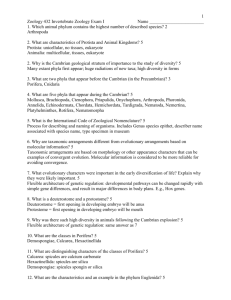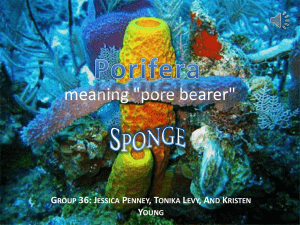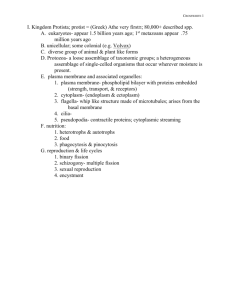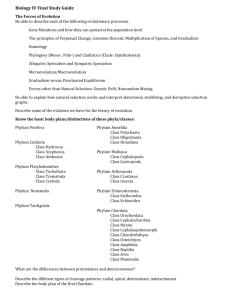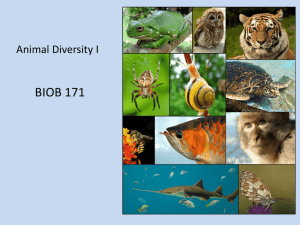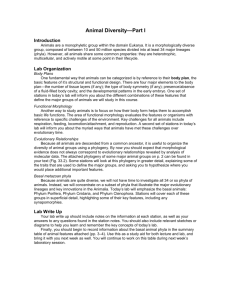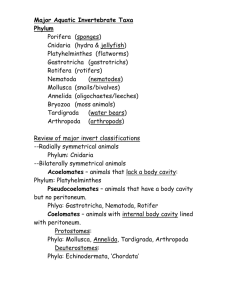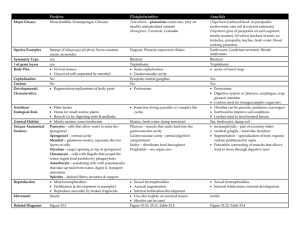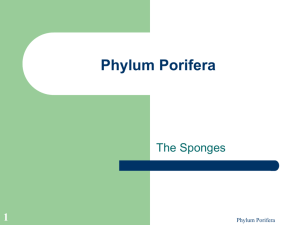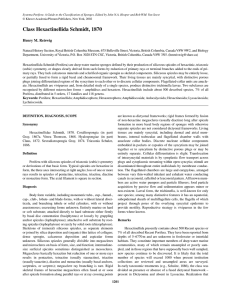Exam I answers
advertisement
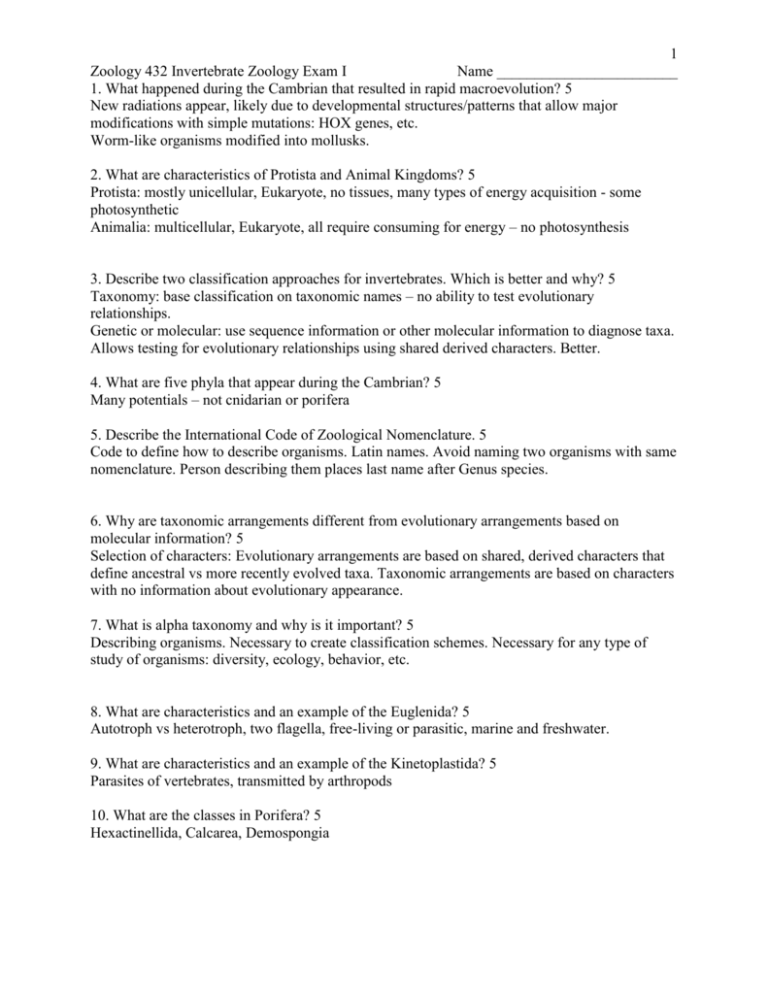
1 Zoology 432 Invertebrate Zoology Exam I Name ________________________ 1. What happened during the Cambrian that resulted in rapid macroevolution? 5 New radiations appear, likely due to developmental structures/patterns that allow major modifications with simple mutations: HOX genes, etc. Worm-like organisms modified into mollusks. 2. What are characteristics of Protista and Animal Kingdoms? 5 Protista: mostly unicellular, Eukaryote, no tissues, many types of energy acquisition - some photosynthetic Animalia: multicellular, Eukaryote, all require consuming for energy – no photosynthesis 3. Describe two classification approaches for invertebrates. Which is better and why? 5 Taxonomy: base classification on taxonomic names – no ability to test evolutionary relationships. Genetic or molecular: use sequence information or other molecular information to diagnose taxa. Allows testing for evolutionary relationships using shared derived characters. Better. 4. What are five phyla that appear during the Cambrian? 5 Many potentials – not cnidarian or porifera 5. Describe the International Code of Zoological Nomenclature. 5 Code to define how to describe organisms. Latin names. Avoid naming two organisms with same nomenclature. Person describing them places last name after Genus species. 6. Why are taxonomic arrangements different from evolutionary arrangements based on molecular information? 5 Selection of characters: Evolutionary arrangements are based on shared, derived characters that define ancestral vs more recently evolved taxa. Taxonomic arrangements are based on characters with no information about evolutionary appearance. 7. What is alpha taxonomy and why is it important? 5 Describing organisms. Necessary to create classification schemes. Necessary for any type of study of organisms: diversity, ecology, behavior, etc. 8. What are characteristics and an example of the Euglenida? 5 Autotroph vs heterotroph, two flagella, free-living or parasitic, marine and freshwater. 9. What are characteristics and an example of the Kinetoplastida? 5 Parasites of vertebrates, transmitted by arthropods 10. What are the classes in Porifera? 5 Hexactinellida, Calcarea, Demospongia 2 11. What are distinguishing characters of the classes of Porifera? 5 Spicules differ – Calcarea have calcareous spicules. Demospongiae have protein spicules, Hexactinellida have spicules of silica 12. What are the characteristics and an example in the phylum Apicomplexa? 5 Protista, parasites, Malarial organism = Plasmodium. Apical complex. 13. What are the characteristics and an example in the phylum Cnidaria? 5 Stinging cells, two tissue layers – epidermis and endodermis, freshwater and marine, all heterotrophs, many have two stage life history – hydroid and medusa. 14. What are the characteristics and an example in the phylum Dinoflagellata? 5 Flagellated protista, marine and freshwater, 15. What are the characteristics and an example in the phylum Rhizopoda? 5 Amoeboid protists, pseudopodia, freshwater and marine, no tissues, 16. What are the characteristics and an example in the phylum Diplomonida? 5 Flagellates, parasitic, Protistan, Giardia is an intestinal parasite of vertebrates. 17. What are the characteristics and an example in the phylum Amoebozoa (Lobosea)? 5 Amoeboid protists, pseudopodia, freshwater and marine, no tissues, heterotrophs 18. What are the characteristics and an example in the phylum Chlorophyta? 5 Autotrophs, chloroplasts for photosynthesis, flagella, Volvox or Chlamydomonas 19. Sketch a diagram of the life cycle of Trypanosoma. Describe your sketch. 5 Include vert and insect vector, describe transmission method, where in vertebrate? 3 20. Label this organism. 5
